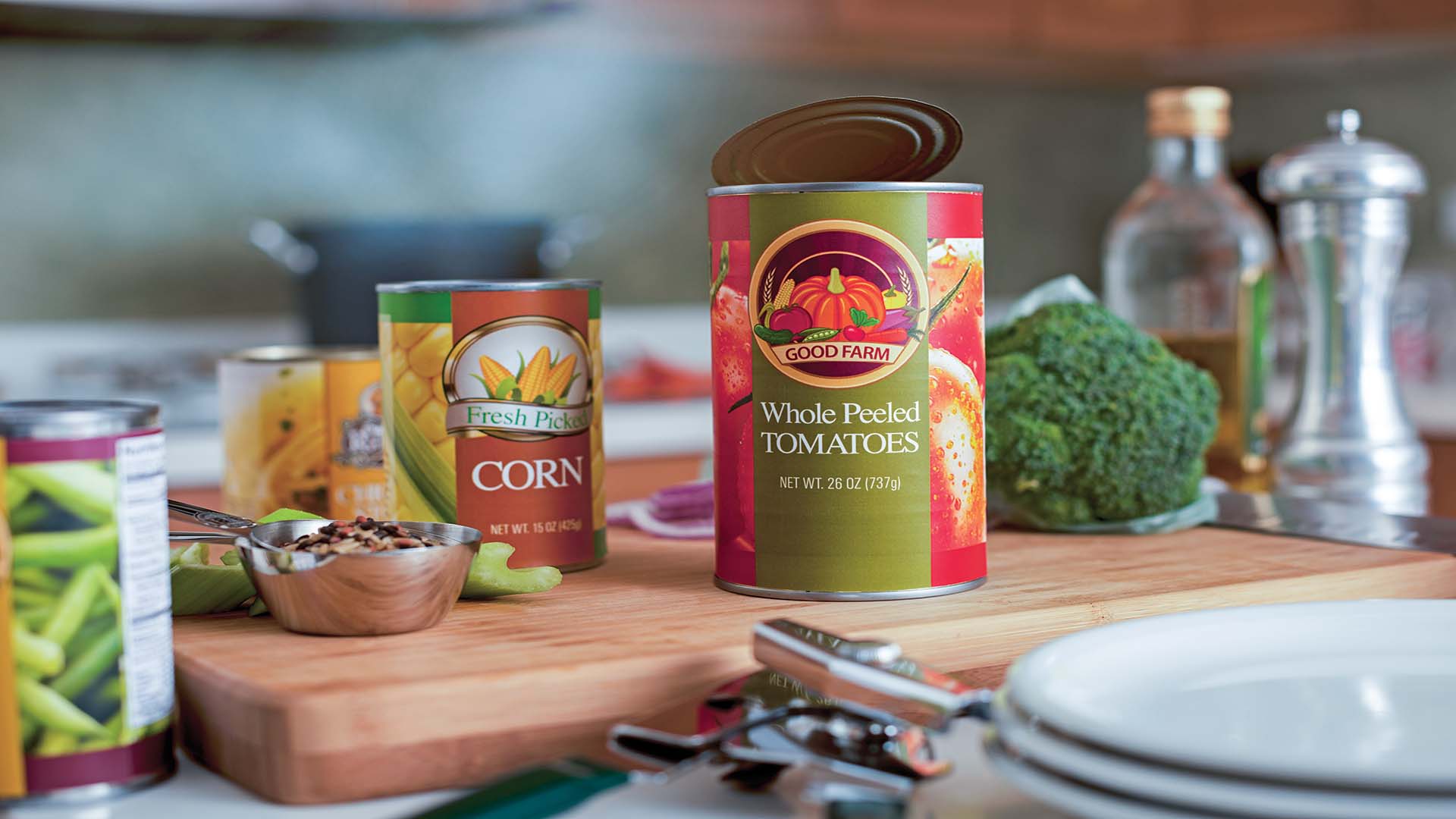Nutrition

When it comes to food, consumer tastes may vary, but the qualities they value do not. Freshness, high-quality ingredients, convenience and environmental responsibility invariably find their way to the top of consumer demands for their food products and packaging. The can helps brands achieve all of these, but many consumers are not aware of this fact.
Metal food packaging has been keeping food fresh since King George II granted Peter Durand a patent for his idea of preserving food in airtight tin containers in 1810. By the end of the 20th century, canned fruits, vegetables, meats and meals had become a standard part of our culture and could be found in almost every household’s pantry.
Today, however, while we continue to value canned foods for the convenience they offer, we tend to forget the benefits that drove people like Durand to package foods in metal in the first place, namely the health and nutritional advantages that the format affords. Some consumers are of the mindset that canned foods are less nutritious than their fresh or frozen counterparts. But, these canned food facts prove that nothing could be further from the truth. Canned foods are nutritionally on par with fresh and frozen products, and in many cases, they are more nutritious. For example, canned tomatoes generally have more lycopene and beta carotene than fresh tomatoes. Canning also helps make fiber in certain vegetables, like beans, more soluble and therefore more useful to the human body.
Canning facilities are strategically located near farms so that fruit and vegetables are canned within hours of being picked—the time when they are at their freshest. The food is then cooked in the can to destroy bacteria, leaving a low-oxygen environment that maintains the same amount of vitamins and nutrients from the day the food was canned—without the need for any chemical preservatives—for the can’s entire shelf life.
This is an important distinction between canned and fresh foods. Fruit and vegetables begin to lose nutritional value from the first moment they are picked and canning and freezing facilities are located near farms for that very reason. It can, however, sometimes take weeks to transport fresh produce from the farm to store shelves, during which many of the valuable nutrients can be lost. As a result, fresh food is typically treated with preservatives after picking that prevent it from spoiling but also expose consumers to otherwise unnecessary chemicals. When it comes to frozen foods, produce is flash-frozen immediately to lock in freshness. However, brands are then faced with high energy costs to maintain vegetables in that frozen state during storage and transportation. Goods in steel food cans avoid this problem since they can be transported as-is.
The Value of Metal Food Packaging
The high temperatures of retort cooking effectively sterilize the food in cans, which is critical to maintaining the safety of those products. Metal cans protect food against any external influence during heat treatment as well as storage because of the hermetic seal formed prior to retorting. According to the Center for Disease Control, at least 128,000 Americans are hospitalized each year with food-borne illnesses, and analyses conclude that canned foods are the safer option thanks in part to the canning process that creates a barrier to microbiological contamination. In fact, according to U.S. Food & Drug Administration records, there has not been an incidence of food-borne illness resulting from a failure of metal packaging in more than 35 years.
As metal food packaging transfers heat during the retort process to the food more rapidly than alternative materials and allows the heat to completely penetrate to the center of the product, the food is completely cooked and preserved without risk of spoiling during storage. This is essentially the exact same process used in home canning, simply on a larger scale—the food, water and any salt or spices for taste are canned, heated, then left to cool. No further additives, preservatives or chemicals are needed.
Canned foods provide a smart, shelf-stable option for families and one that offers valuable savings, both reducing the amount of time required to prepare a meal and helping families maintain a healthy lifestyle on a tight budget.
And once the packaging process is complete, it is metal cans that most effectively continue to preserve the quality of the food it contains. Foods typically degrade through extended exposure to air or sunlight, and metal is the only container material that completely prevents light and oxygen from infiltrating the package, offering excellent barrier properties. This is, of course, why products ranging from condensed milk to pet food have traditionally been packaged in metal, as the barrier of the can best protects and greatly extends the product’s shelf life.